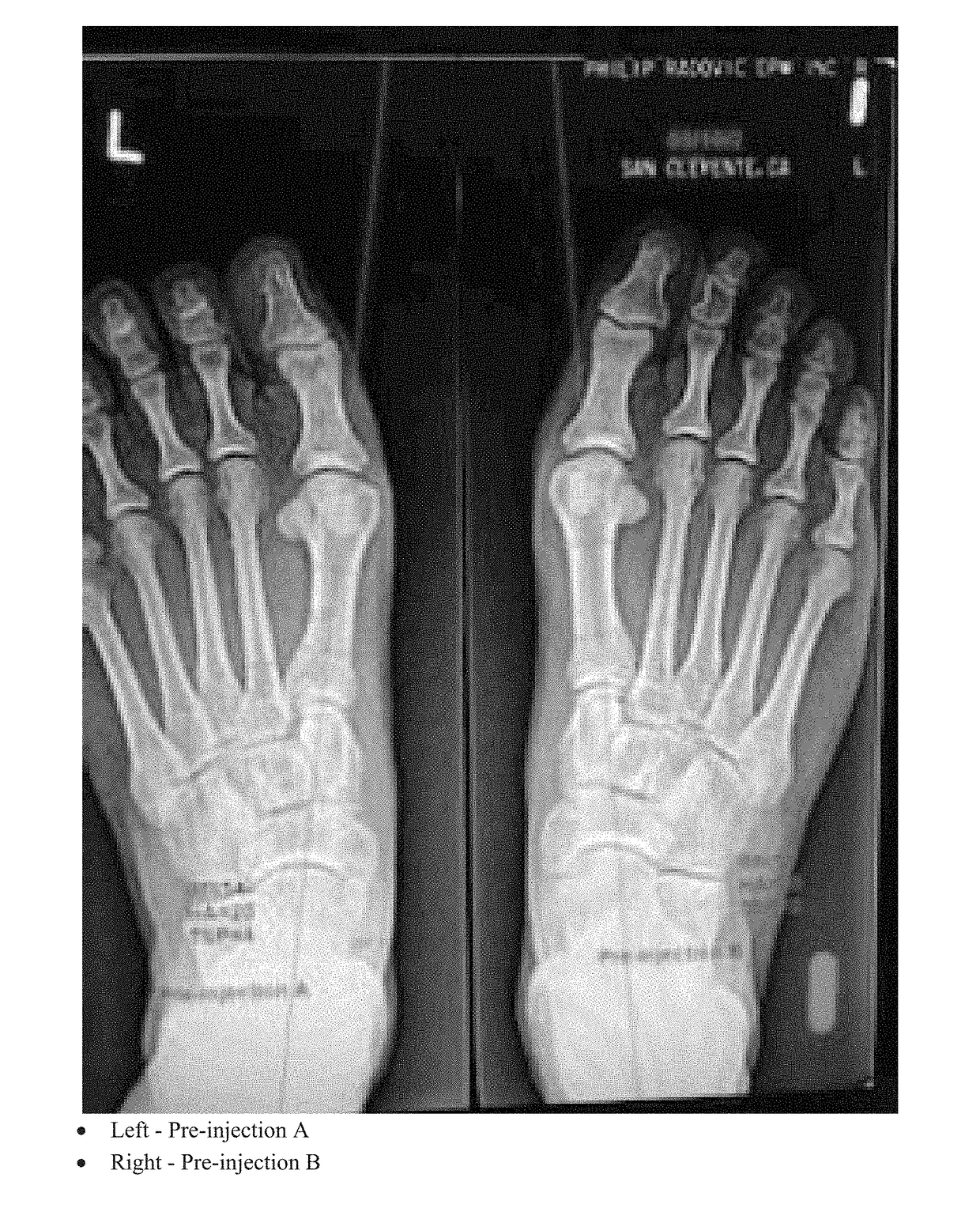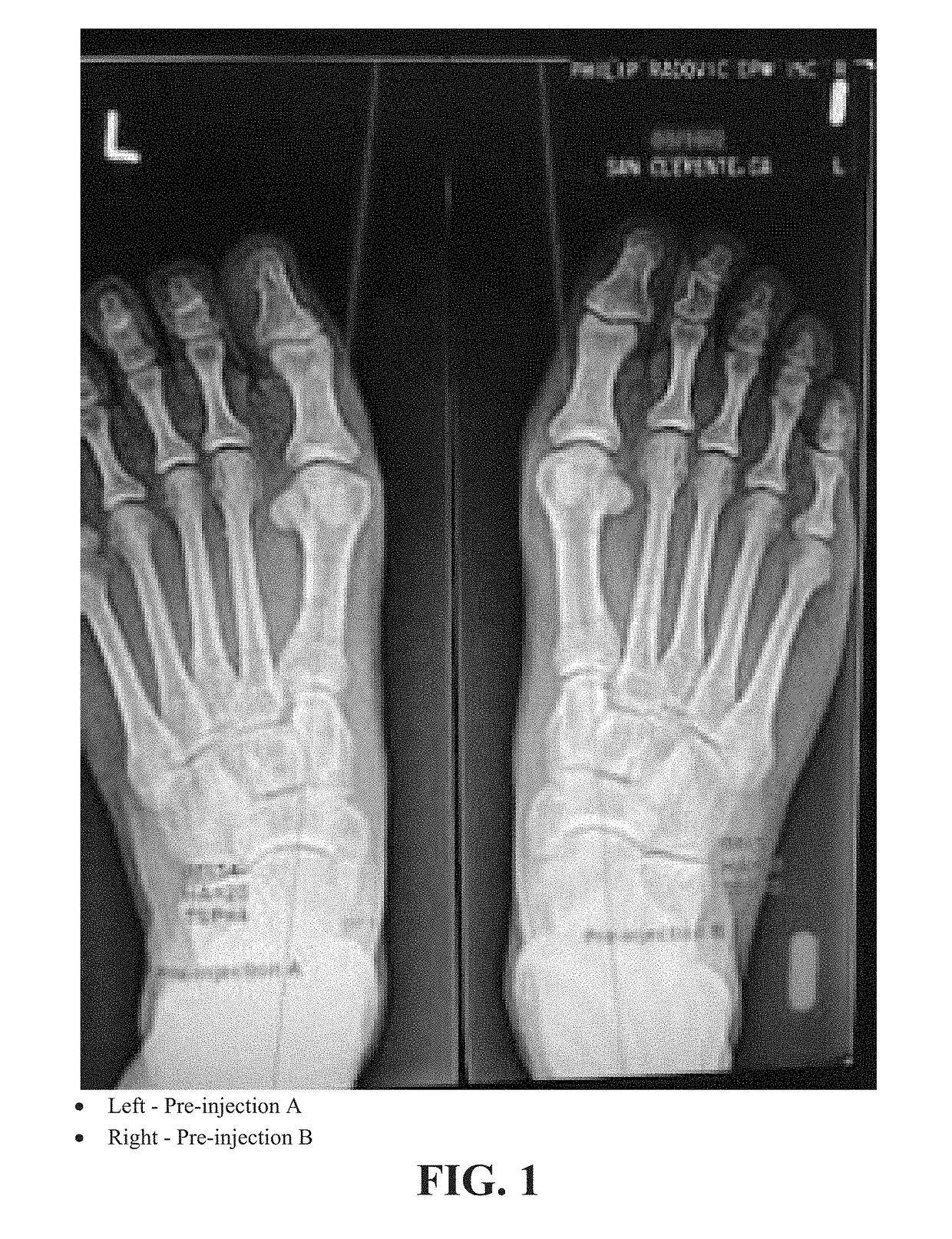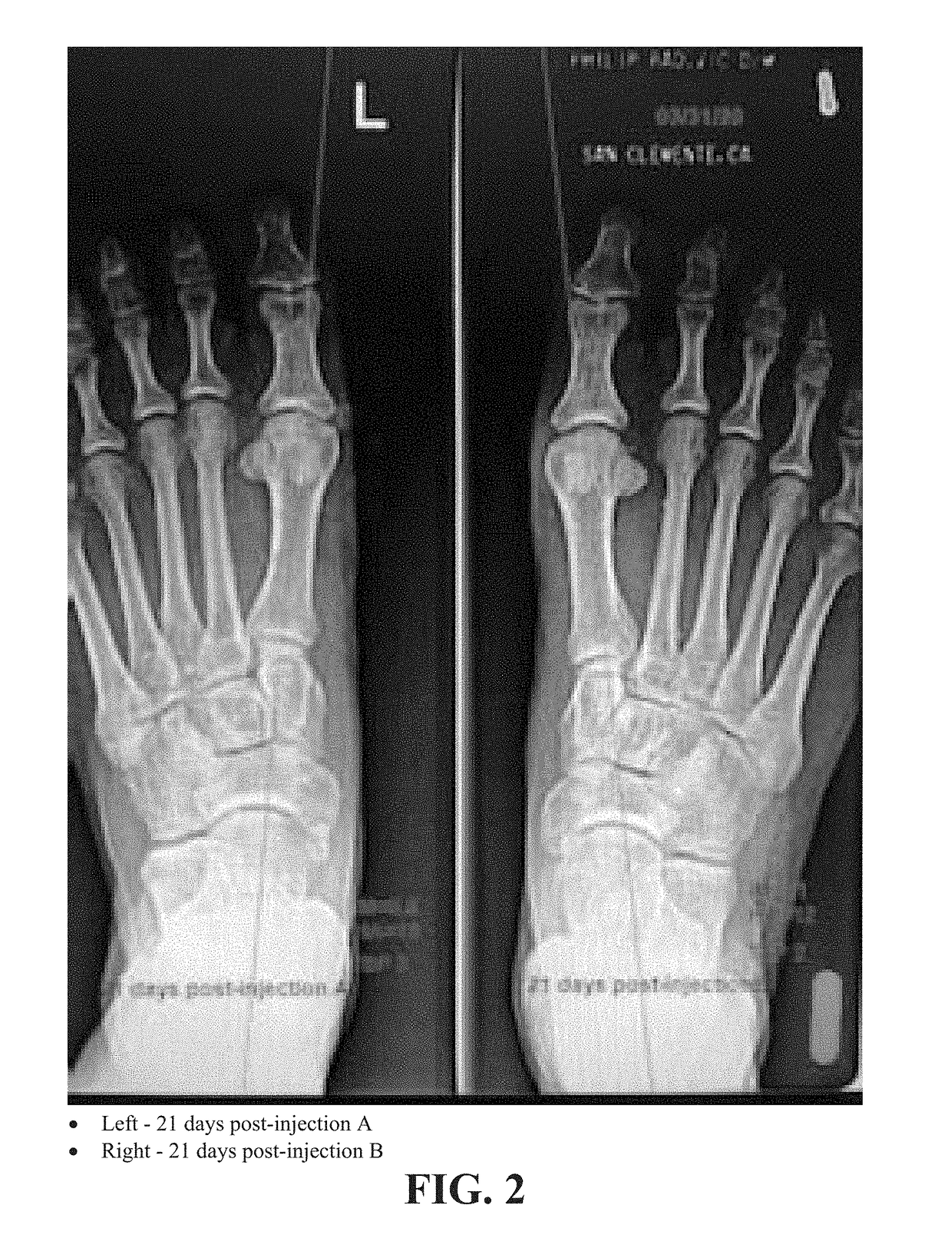Methods of treating abnormalities of the first metatarsophalangeal joint of the foot
- Summary
- Abstract
- Description
- Claims
- Application Information
AI Technical Summary
Benefits of technology
Problems solved by technology
Method used
Image
Examples
example 1
[0093]A female patient suffering from hallux abductovalgus was treated with 100 units of botulinum toxin type A by direct injection of the toxin into the adductor hallucis muscle. Determination of the injection sites was performed by placing the INOJECT needle from the dorsal mid first interspace of the foot proximal to the first and second metatarsophalangeal joint and delivering a 2 Hz pulse while advancing the needle in the direction of the transverse adductor hallucis muscle belly. Once a motor response was elicited (pulsating abduction of the hallux), 25 units of the toxin were injected into the transverse belly of the adductor hallucis muscle. The needle was then partially retracted and redirected upward toward the oblique arm of the adductor hallucis muscle and advanced plantarly until a motor response was elicited (adduction of the hallux). At this point, 75 units of the toxin were injected into the oblique adductor hallucis muscle. Within 1 week, the symptoms of hallux abdu...
example 2
[0095]A female patient suffering from hallux limitus was treated with 100 units of botulinum toxin type A by direct injection of the toxin into the Flexor Hallucis Brevis (FHB) muscle. Determination of the injection sites was performed by placing the INOJECT needle through the skin from the dorsum of the foot at the mid first interspace proximally and applying stimulation while advancing the needle in a plantar medial direction to the lateral belly of the Flexor Hallucis Brevis. Once location was confirmed with a motor response of plantar flexion of the first metatarsophalangeal joint, 50 units of toxin were injected into the lateral belly of the Flexor Hallucis Brevis muscle. The medial belly of the Flexor Hallucis Brevis muscle was then approached with the needle through the medial aspect of the foot where the muscle can be palpated. The needle was advanced transversely from about the level of the first metatarsal until a motor response of plantar flexion of the first metatarsopha...
example 3
[0108]A radiographic comparison study of the Hallux Abductus (HA) angles, 1st Intermetatarsal (IM) Angles and Tibial Sesamoid Positions (TSP) was done on the same patient PR with almost identical bilateral HAV deformities to assess the contribution to reduction of the HAV deformity with the Extensor Hallucis Brevis (EHB) injection (INJECTION B) as an isolated procedure and as an improvement / adjunct to the original isolated procedure (INJECTION A).
[0109]FIGS. 1-3 are radiographs of right and left feet of the patient taken at pre-injection, 21 days post-injection and 42 days post-injection, respectively. All radiographs were positioned and taken by the same technician with the patient in their natural weight bearing angle and base of gait. Comparisons for this study were AP views at 13 degrees from vertical taken prior to treatment and then at 3 week intervals×2 after each injection.
[0110]The first injection series was as follows (immediately after initial radiographs):[0111]Right foo...
PUM
| Property | Measurement | Unit |
|---|---|---|
| Time | aaaaa | aaaaa |
| Area | aaaaa | aaaaa |
| Area | aaaaa | aaaaa |
Abstract
Description
Claims
Application Information
 Login to View More
Login to View More - R&D
- Intellectual Property
- Life Sciences
- Materials
- Tech Scout
- Unparalleled Data Quality
- Higher Quality Content
- 60% Fewer Hallucinations
Browse by: Latest US Patents, China's latest patents, Technical Efficacy Thesaurus, Application Domain, Technology Topic, Popular Technical Reports.
© 2025 PatSnap. All rights reserved.Legal|Privacy policy|Modern Slavery Act Transparency Statement|Sitemap|About US| Contact US: help@patsnap.com



